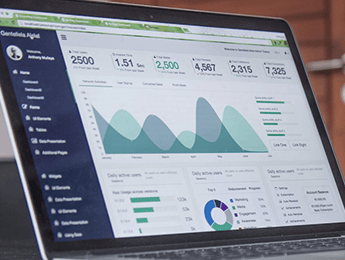


If you're not already using lead scoring, you should consider using it. Lead scoring uses data about past customer behavior to effectively predict which leads are most likely to make a purchase and which are most likely to close. In effect, the system evaluates the constellation of factors that point to a purchase and scores each lead based on how many of those factors have been demonstrated to date.
With evaluation, all the data you collect over time has more value than ever before. Now you can put it all into one piece of software. The data allows them to gain meaningful insights that can have a positive impact on the way their business works and the service they provide.
All other factors being equal, measurable ROI often leads to higher budgets for sales teams. Finally, better allocation of resources to what really works benefits everyone. It sharpens focus on the most important goals and ensures that ineffective ideas are discarded in favor of valuable innovations.
Higher conversion of qualified leads into opportunities Moving leads forward faster within the sales funnel creates more revenue in the pipeline. It also means your team spends much less time chasing decision makers who ultimately don't decide to buy.
Increased sales productivity ensures you can accomplish more with a smaller, leaner team. When companies are just starting out, this can be the difference between winning and losing. Even if experienced, a more efficient department will enable any newcomer to contribute to success sooner.
Everyone knows that the sales cycle is getting longer and longer here in the B2B world. There's not always anything you can do about it.
The best thing you can do, however, is find leads. It eliminates a lot of work and waiting, so you can focus on important meetings and leads months sooner. Sales forecasting is a precise process that not all companies can keep track of. When you forecast effectively, it allows you to avoid cash flow issues and optimize production.
This, in turn, gives your sales team the opportunity to help shape overall strategic direction. Everyone is talking about sales and marketing alignment these days. It's important to work well together, but how can you make it happen? By pushing data to both teams and sharing leads in a timely manner, lead scoring systems deliver a high level of alignment between marketing and sales.
Scoring isn't a new idea - but until recently, very few software suites combined all the key data points under one roof. Instead, someone had to sift through individual data points and combine web analytics with the direct observations of sales professionals.
This resulted in rickety, inaccurate assessments that took a long time to come online.
Today, we can turn to customer relationship management (CRM) systems for results. Today's best CRMs translate their own data directly into intuitive and consistent lead scoring. Everyone along the value chain can use and understand the output immediately.
If you want to implement lead scoring quickly and well, the HubSpot CRM is ideal.
HubSpot's CRM is designed and developed by the masters of inbound marketing at HubSpot. These are the guys and gals who created, tested, verified, and evangelized all the inbound marketing best practices that the most successful companies swear by today.
HubSpot's CRM offers two ways to manage your lead scoring process:
Manual lead scoring lets you tailor things to your liking using criteria-based smart lists. Predictive lead scoring allows the system to build a lead score largely on its own.
If you haven't scored your leads yet, HubSpot is our top recommendation. The HubSpot CRM is robust, under constant development, and - most importantly - free.
Even if you have a current CRM solution, it's a good idea to compare it to HubSpot and evaluate whether your existing CRM meets your future needs. Either way, lead scoring is the best way to take an otherwise healthy sales team to the next level. It will take away so much work - both busywork and guess work - they'll wonder how they ever got along without it. They can focus on real priority tasks better than ever before.